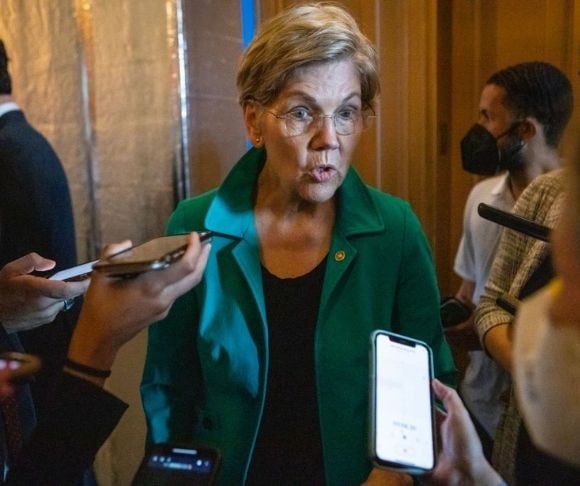Is the Federal Reserve doing too much or too little? At this stage in the institution’s tightening cycle, Sen. Elizabeth Warren (D-MA) is worried the Fed will go too far in its inflation-busting crusade and trigger a sharp economic downturn. But the former presidential candidate’s concerns represent more of the Keynesian thinking that led to rampant inflation and kicked the can of economic challenges down the road without addressing the root causes of America’s issues.
Elizabeth Warren Worried About a Recession
In an Aug. 28 interview with CNN’s State of the Union, Warren told host Dana Bash that she is concerned the central bank will kill the economy in order to achieve its price stability objective. Her remarks were in response to Fed Chair Jerome Powell’s Jackson Hole Economic Symposium oration, where he warned about “some pain” for businesses and households.
“What’s worse than high prices and a strong economy is high prices and millions of people out of work. I’m very worried that the Fed is going to tip the economy into recession,” Warren stated. “What he calls ‘some pain’ means putting people out of work, shutting down small businesses, because the cost of money goes up, because the interest rates go up.”
She added that the Fed’s quest to counter inflation does not target what she believes are the main sources of rampant price inflation, including global supply chain snafus and the Ukraine-Russia military conflict. Therefore, according to Warren, the organization’s quantitative tightening (QT) efforts will not achieve its intended objectives.
The Sound of Doves Crying
The US central bank has been raising interest rates every month since March and intends to pull the trigger on rate hikes for the rest of 2022. The primary debate is whether Powell and Co. will front-load these increases to the benchmark federal funds rate or maintain the status quo of 25- and 50-basis-point jumps. Warren’s grievance is that raising borrowing costs will slow down activity in a credit-dependent economy, resulting in widespread job losses. While her gripe is justified, the senator’s argument fails to address two key realities regarding monetary policy and what role the Fed had in manufacturing today’s inflation.

Elizabeth Warren (Photo by Anna Rose Layden/Getty Images)
The first is that the Federal Reserve created the current environment by adding $6 trillion to the money supply in two years and expanding the balance sheet to nearly $9 trillion. By injecting new units of currency into the marketplace, the supply of dollars and enormous fiscal stimulus exacerbated the demand for too few goods in a shutdown economy. The second is that the Fed is not going far enough to put a lid on inflation. Instead of quarter- and half-point upward movements, the central bank needs to go scorched earth on interest rates and bring them to a level that mirrors or exceeds the annual inflation rate, whether it is the consumer price index (CPI) or the personal consumption expenditure (PCE) price index. So, instead of a so-called neutral rate of 3.4%, the Fed would need to amplify the number to at least 8% for an extended period.
Remember, the central bank is trying to mitigate demand by removing money from the economic landscape. It is slowing down the pace of money supply growth and evaporating excess liquidity through a combination of rate hikes and balance sheet runoffs. Yes, the supply side – the worldwide supply chain crisis, the commodities boom, and the war in Eastern Europe – has been a notable factor in producing a four-decade-high CPI. However, demand destruction – driven by the Fed-induced price instability phenomenon – is gradually dissipating many inflationary pressures. This is seen in the retail landscape, with excess inventories causing retailers to slash prices.
Warren Embraces Erdoganomics
Turkish President Recep Tayyip Erdogan is cutting interest rates when inflation is nearing 100%. His economic doctrine is that Ankara can grow its way out of a currency crisis, despite his efforts contradicting orthodox thinking. Warren ostensibly shares the same belief system: The Fed needs to leave the benchmark rate artificially low so that a rising GDP growth rate can cure higher prices. Be it Erdoganomics or Warrenomics, the problem with a central authority dictating interest rates is that public policymakers are ignorant about what they should be doing during a boom or bust phase of the business cycle. If the market oversaw rates, it would most likely signal the need for something higher than a quarter point when inflation is north of 8%.




